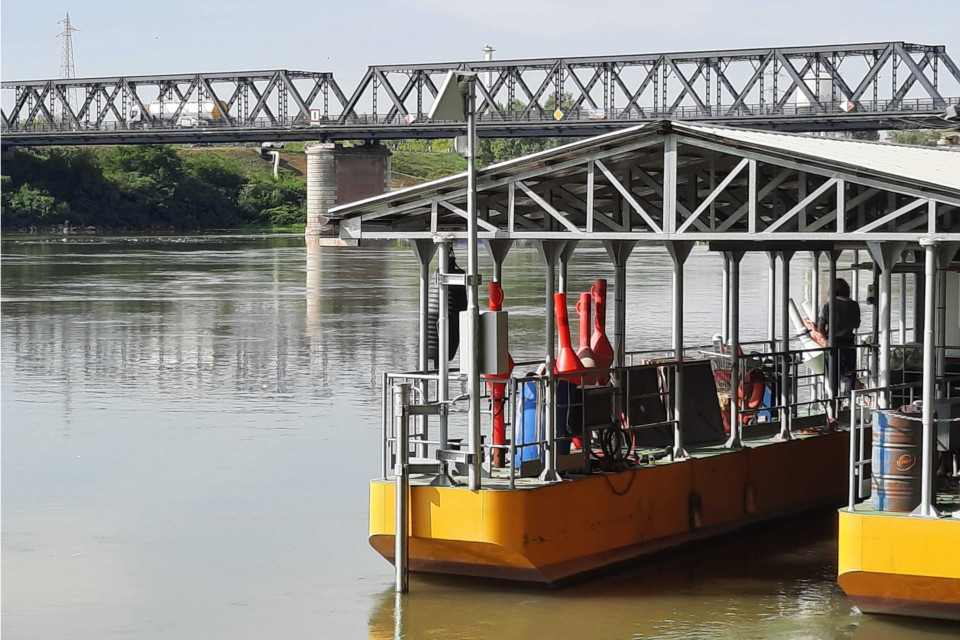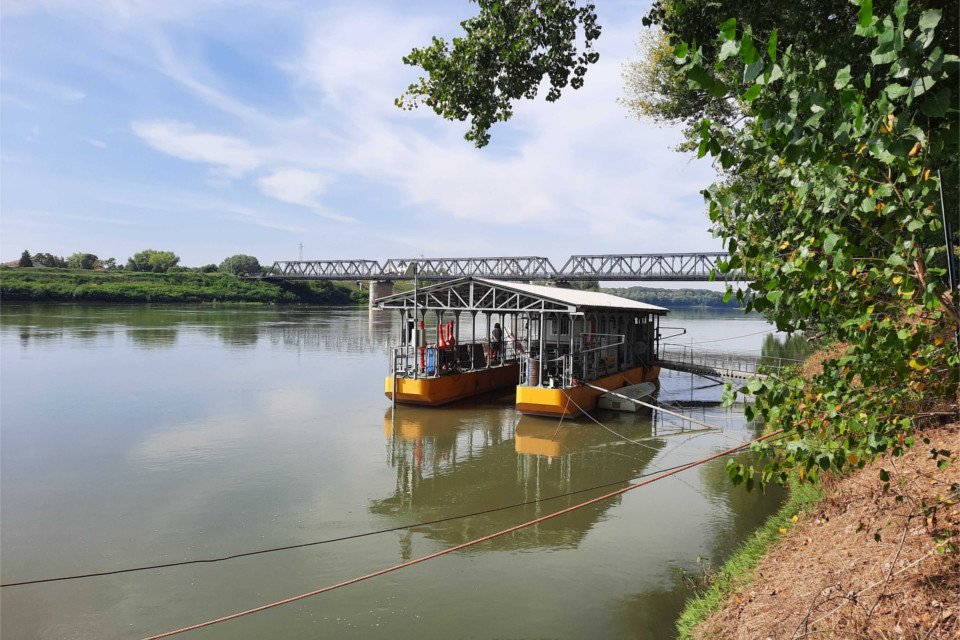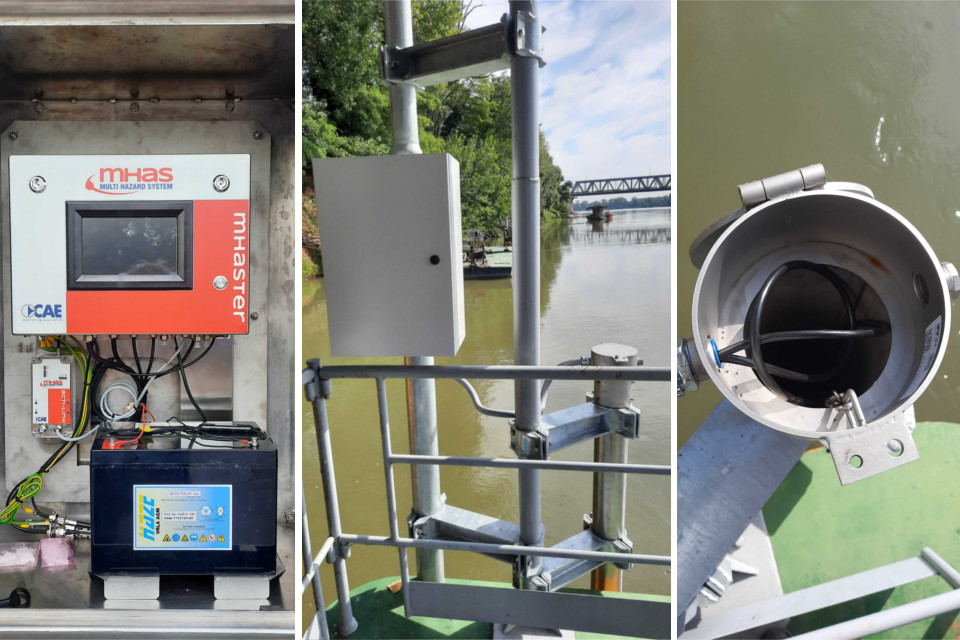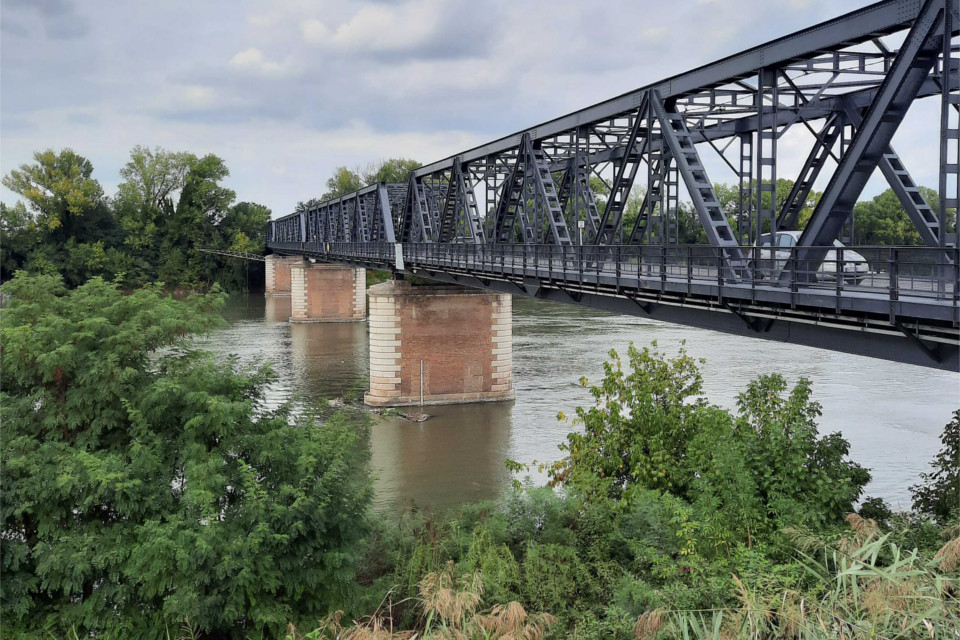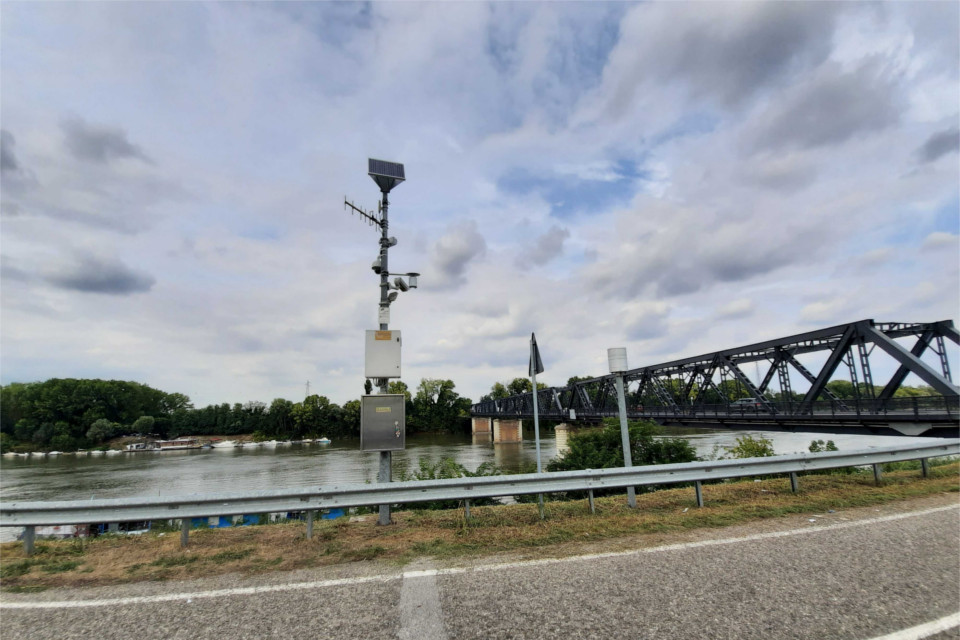Po River: new investments to protect water quality
April 2022
A new multiparameter probe for water quality was installed at the Pontelagoscuro ARPAE station, which is part of the Emilia-Romagna Integrated Regional Hydro-Meteo-Pluviometric Network (RIRER).
The Po River District Basin Authority (ADBPO), in collaboration with ARPAE-SIMC, owner of the station, has promoted the installation and maintenance of the aforementioned probe for at least three years, in a spot where the monitoring of the Po River is strategic, in order to detect chemical-physical parameters such as: water temperature, electrical conductivity, pH, dissolved oxygen, redox potential, turbidity.
According to the Legislative Decree 152 of April 3rd, 2006 "Legislative Decree 152/2006 Environmental Regulations”, Part Three, Annex 5, Table 3, "Emission limit values in surface waters and sewers", the measurement of these parameters will allow to have feedback on the states of change of the monitored river section.
Thanks to the basic parameters provided by this probe, information will be obtained on the state of the water, which will be analysed and framed within the seasonal trends, the historical data and the fluctuations of the values. Particularly:
- the measurement of the physical parameter of water temperature allows the monitoring and definition of the maximum variations between average temperatures in the sections of the watercourse upstream and downstream of any entry points;
- the physical parameter of electrical conductivity is used to determine the water salinity, the monitoring of which is essential as far as industrial waste is concerned, as well as to determine the saltwater intrusion;
- pH is a measure of the acid-base balance of an aqueous solution. Knowing this data is important for any type of assessment regarding the quality of water, first of all the drinking water;
- the measurement of the dissolved oxygen concentration is necessary for the respiratory metabolism of most living organisms. It therefore represents an essential parameter to define the suitability for life of an aquifer, as well as to establish its level of pollution. Continuous monitoring of this parameter allows to record changes in its concentration and be alerted in effective time, before the monitored ecosystems suffer irreversible damage;
- the redox potential is a unit of measurement of the electron activity in the aqueous medium when water comes into contact with other substances and is directly dependent on pH. These two parameters, combined with the electrical conductivity, define the tendency of a well-determined aquatic environment to develop chemical reactions.
Knowing the redox potential is essential for the purification activities related to purifiers and the reuse of the water coming from them, as well as to define the liveability characteristics of the aquatic habitat for living species and therefore its degree of pollution; - the turbidity measurement gives indications on the clarity of the water. This parameter measures the quantity and, therefore, the concentration of particles suspended in water, such as micro-organisms, silica, sludge, organic substances, minerals, oils, bacteria... Its determination is crucial to provide feedback on water pollution and on the impacts that the presence of these particles have on aquatic life.
This need has emerged in order to pursue the requirements of the Water Framework Directive (WFD), whose objectives highlight the importance of the water resource from a socio-economic point of view and of the identification of water bodies and relative chemical - physical - biological characteristics, as well as their level of alteration.
Since up to now this kind of control activities has been carried out by the competent Bodies through measurement campaigns, ADBPO believes that an automatic and continuous monitoring of the chemical-physical parameters subject to these analyses can become a valid aid and a powerful tool to support those who deal with this on a daily basis. As a matter of fact, through constant, punctual, real-time and fast monitoring in terms of data return, it is possible to identify spills in surface waters, thus allowing timely intervention by the competent authorities, as well as to enhance a database from an informative point of view, which will be useful for design and planning actions.
Therefore, by installing this probe, the District Authority wanted to launch an experiment to test the effectiveness of monitoring with fixed multiparameter probes supporting the pre-existing hydrometric stations on the Po River; its installation will allow to:
- obtain a complete cognitive picture in the same point, which includes both qualitative and quantitative data, linked to the hydrometric level;
- investigate the variation of the basic parameters, due to anthropogenic pressures, by measuring organic load, oxygen balance, acidity, water salinity and microbial load, as well as hydrological characteristics of the transport of solids;
- evaluate the water quality index of the Po River in order to promptly alert the exceeding of predefined limit values for the detected parameters, as well as the evolutionary trend resulting from the implementation of the planned interventions;
- evaluate the loads of pollutants carried by the Po River into the Adriatic Sea;
- make use of an automatic and continuous monitoring of the waters, as well as of a reliable and timely transmission of the detected data such as the radio carrier with which these stations are equipped.
The data collected will be sent via the ARPAE radio monitoring network, then acquired and displayed on the systems used by the aforementioned Body and finally made available to ADBPO for subsequent analyses.
Back to the news index

